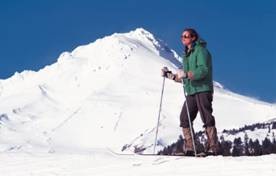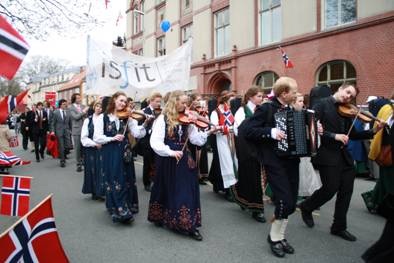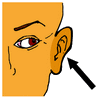12 Extras - LearnNoW
12 Extras
12.1
12.1 Words for snow
There are many words for snow in Norwegian, here are a few of the most commonly used:
| et snøvær | snowy weather |
| en snøstorm | snow storm, blizzard |
| en snøfokk / et snødrev |
drifting, blowing snow (weather type) |
| en drivsnø | drifting/drifted snow (snow type) |
| ei snøfonn | snowbank (made by the wind) |
| en brøytekant | snowbank (roadside, man made) |
| en klabbesnø | sticky snow (i.e. under the skis) |
| en løssnø | loose snow |
| en skare | snow crust |
| et slaps | slush, partly melted snow |
| et sludd | wet snow, mixed rain and snow |
| en tørrsnø | dry snow |
| et snøfnugg | snowflake |
| ei snøfille | big snowflake |
| kram snø | moist snow (good for snowballs) |
12.2
12.2 Det (it)
A well-formed sentence always needs a subject in Norwegian. When there is no logical subject, we often use det.
This occurs for instance in impersonal constructions:
| Det ringer på døra. The doorbell is ringing. / Someone rings the doorbell. |
| Det gjør vondt. It hurts. |
As shown in Chapter 10, det is also used in expressions about the weather:
| Det er fint vær. The weather is nice. |
| Det regner. It's raining. |
| Det snør. It's snowing. |
| Det er varmt. It's hot. |
| Det er sol. It's sunny. |
12.3
12.3 Man (one)
Man is an indefinite pronoun. It is used to refer to people, but not to specific individuals:
| Man spiser ribbe på julaften. One eats ribs on Christmas Eve. |
| I Norge bruker man flagg på juletreet. In Norway, one uses flags on the Christmas tree. |
En is also often used in the same way:
| En kan studere norsk på nett. One can study Norwegian online. |

12.4
12.4 Easter and 17 May
Påske og 17. mai
Påske
Vi feirer påske til minne om at Jesus døde og sto opp igjen. Påsken begynner på palmesøndag. Torsdag og fredag har alle fri, og skoler og butikker holder stengt. Torsdagen kaller vi skjærtorsdag, og fredagen kaller vi langfredag. Lørdagen er påskeaften. Butikkene er åpne denne dagen, men ikke så lenge. Mandagen etter påskeaften er også en helligdag.
We celebrate Easter to commemorate Christ's death and resurrection. Easter starts on Palm Sunday. Thursday and Friday are days off and schools and shops are closed. Thursday is called «skjærtorsdag» (Maundy Thursday) and Friday is called «langfredag» (Good Friday). Saturday is «påskeaften» (Holy Saturday). The shops have limited opening hours that day. Monday after «påskeaften» is also a public holiday.
I påsken reiser mange nordmenn på ferie. Mange drar til hytta for å gå på ski og for å være sammen med familien sin. Noen reiser også til utlandet.
Many Norwegians go on holiday for Easter. Lots of people go to their cottages to go skiing and to be with their families. Some also go abroad.

17. mai
17. mai er Norges nasjonaldag. Vi feirer denne dagen fordi Norge fikk sin egen grunnlov (konstitusjon) den 17. mai i 1814.
17 May is Norway's national day. We celebrate this day because Norway got its own constitution on 17 May, 1814.
17. mai er barnas dag. Barna går i tog, korpsene spiller i gatene, og alle feirer og er glade. Barna spiser pølser og is og drikker brus.
17 May is the children's day. The children walk in parades, the marching bands play in the streets and everyone celebrates and is happy. The children eat sausages and ice cream and drink soda.

12.5
The eight following exercises (see 1, 2, 4 ... buttons below), picked from the book Flyt og rytme, will help you in obtaining more fluent speech and a more Norwegian-like speech rhythm. You will be working with speakers from various parts of Norway who all will be speaking Bokmål. Normally the exercises will be guided by a teacher. Unfortunately we are not able to give the detailed instructions to self-study students, but below you will find some simple guidelines.
How to do the exercises:
- Select an exercise below. Work with tab A first, then tab B.
- Click the button to the left and try to imitate the voice you are listening to.
- Try to connect all sounds together to one continuous chain.
- Try to make stressed syllables strong and dominant, and unstressed syllable light and short.
Each column contains 12 sentences reflecting the same speech rhythm pattern.
Number 1 to 3 have the following order. You are supposed to listen to the first sentences, and then repeat them:
| 1 | 2 | 3 | 4 |
| SPEECH | SILENCE | SPEECH | SILENCE |
LISTEN |
SPEAK |
LISTEN |
SPEAK |
We expect you to pick up the rhythmical pattern with the first three sentences.
In number 4 to 12 the order is changed to the following:
| 1 | 2 | 3 |
| SILENCE SPEAK  |
SPEECH LISTEN  |
SILENCE SPEAK  |
If you feel the progress is too fast, we advise you to use the book Flyt og rytme and its complete set of exercises.
